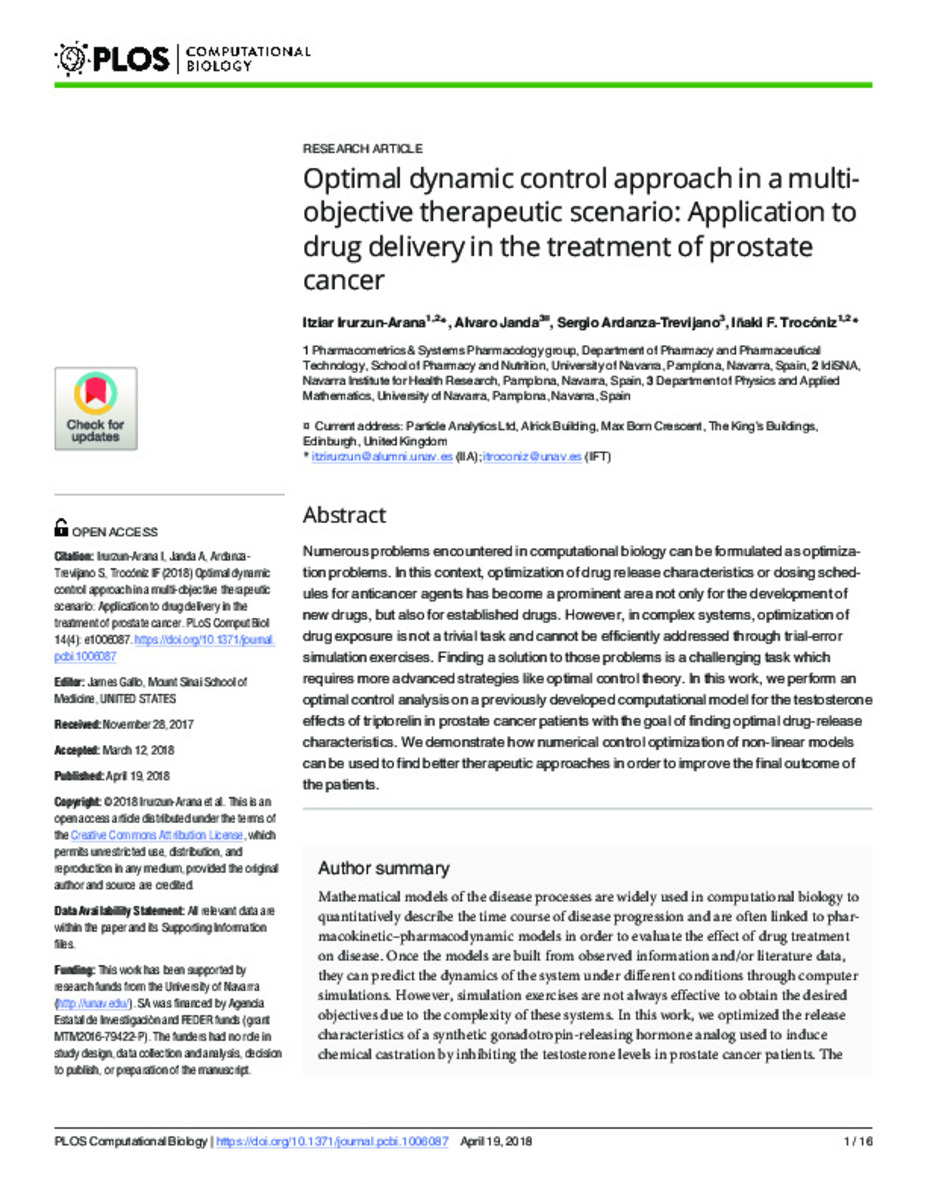Optimal dynamic control approach in a multi-objective therapeutic scenario: Application to drug delivery in the treatment of prostate cancer
Keywords:
Computational biology
Anticancer agents
Mathematical models
TST
TRP
SR
PKPD
Citation:
Fernández-de-Trocóniz, J.I. (José Ignacio); Irurzun-Arana, I. (Itziar); Janda, A. (Álvaro); et al. "Optimal dynamic control approach in a multi-objective therapeutic scenario: Application to drug delivery in the treatment of prostate cancer". . April 19, 2018, 1 - 16
Statistics and impact
0 citas en

0 citas en

Items in Dadun are protected by copyright, with all rights reserved, unless otherwise indicated.










